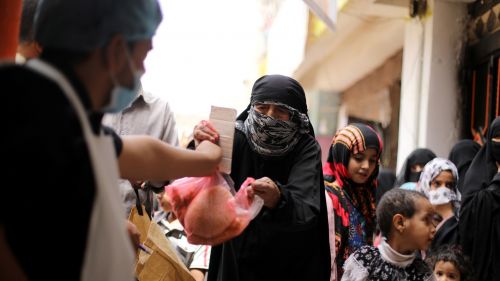Understanding the US Global Food Security Framework

With food security front and center amid COVID-19, climate change, and increased conflict, understanding how the US engages on this issue globally is critical.
While communities, governments, civil society, and the private sector can and should continually work together to promote food security, 2021 offers new opportunities to address monumental threats that could undermine this global issue. This year is the first US Global Food Security Strategy (GFSS) refresh, offering one of these opportunities, but understanding where GFSS fits amid the overarching US global food security framework can be confusing. This blog outlines what the GFSS is, how it fits into US global food security efforts, and how it differs from the Global Food Security Act (GFSA).
Both the GFSA and the GFSS are critical to a comprehensive US response to global food insecurity, and both are critical right now to addressing a new and heightened set of global challenges. The COVID-19 pandemic jeopardizes years of progress, as economic ripples from country-wide lockdowns increase those suffering from food insecurity and malnutrition globally. Climate change continues to accelerate at a rapid pace, necessitating both mitigating and adapting efforts from any US programming, but especially food and agriculture-related programming. And conflict has also trended upwards, exacerbated by the previous two challenges.
The GFSA
While the US has undertaken global food security efforts for decades, the government has only elevated the issue in the last fifteen years. Following devastating global food price spikes in 2007-2008 and ensuing conflict and malnutrition, the Obama Administration created Feed the Future in 2010. Feed the Future is still the US flagship global food security program today, but it began without permanent authorization. In 2016, Congress passed the GFSA, codifying Feed the Future and strengthening government accountability for the program, as well as signaling a government-wide commitment to global food security and agricultural development. In establishing global food security as a whole-of-government priority, the legislation requires eleven US agencies to collaborate on the GFSS that now ultimately guides Feed the Future. The GFSA was reauthorized in 2018 and required reauthorization in five years, with the next iteration in 2023. Currently, Congress has appropriated $1.0056 billion to implement the GFSA through the GFSS.
The GFSS
As mandated by the GFSA, the GFSS unites eleven agencies to collaborate on a whole-of-government response to the root causes of hunger and poverty in low- and middle-income countries (LMICs) through Feed the Future. While Congress authors and shepherds the GFSA, the executive branch holds responsibility for the GFSS, as led by USAID. Each agency submits an implementation plan specific to itself, working in partnership with each other and the private sector, NGOs, local communities, and research institutions primarily in twelve target countries. Each year, USAID coordinates an implementation report to reflect on how the US government executed the GFSS. The GFSS is also refreshed every five years, although on a different schedule from the GFSA; 2021 is the first official refresh since the creation of the first strategy in 2017. The current GFSS incorporated learnings from the first phase of Feed the Future, when it operated six years prior to codification by the GFSA. Those learnings led to a focus on agriculturally-led growth, resilience, and nutrition outcomes, which will continue in the next GFSS in addition to more updated knowledge.
Adapting for the Future
As the US government refreshes the GFSS this year, COVID-19, climate change, and increased conflict will all need careful consideration. In addition to reflecting the context of new global challenges, the refreshed GFSS must integrate learnings from the past five years. USAID has already begun consultations with civil society and the private sector to gather feedback. Perhaps most apparent is the need to continue to transfer power to local communities, listening and understanding what food security means to them and tailoring programs accordingly.
With so much policy emerging in response to the many crises and vulnerabilities confronting the global community, Americans may find it easy to forget US commitments to global food security. The benefits from the GFSA and GFSS are far-reaching, but often difficult to fully quantify. Food security impacts every other conceivable facet of life and wellbeing, and despite near endless statistics on program reach and impact, capturing how life-changing support can be remains elusive. Amidst COVID-19 rapidly accelerating climate change, and elevated conflict, global food security efforts have never been so important. It is essential that Americans are aware of existing US efforts and commitments, and hold the US government accountable in combating food insecurity and malnutrition.
Delivery from the District
This post is a part of our "Delivery from the District" blog series, which analyzes the implications of executive and legislative policy on global food security.